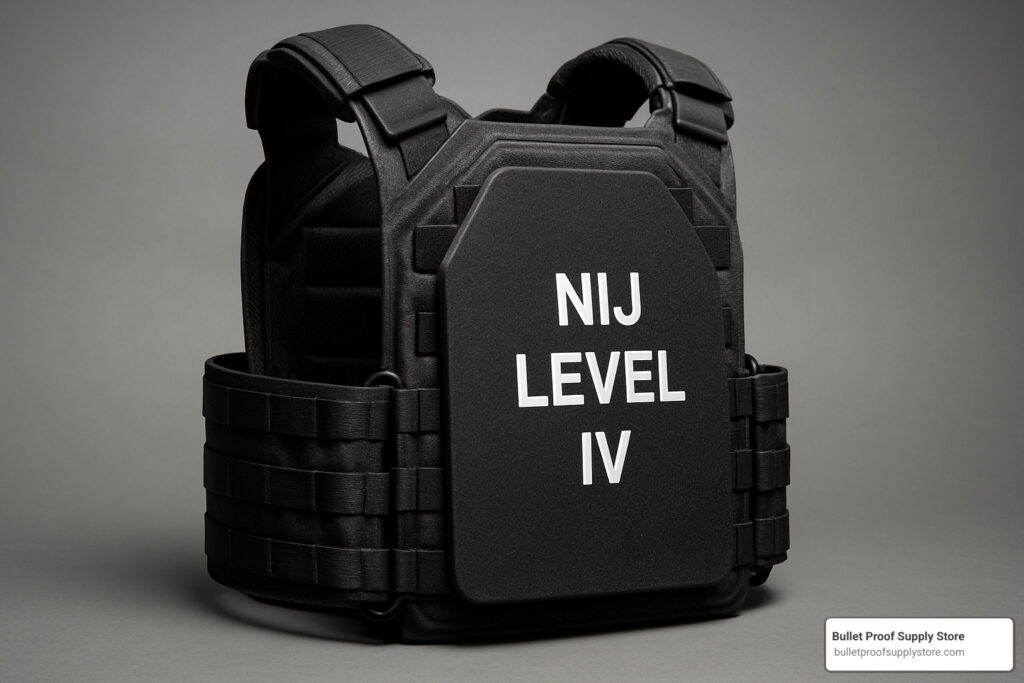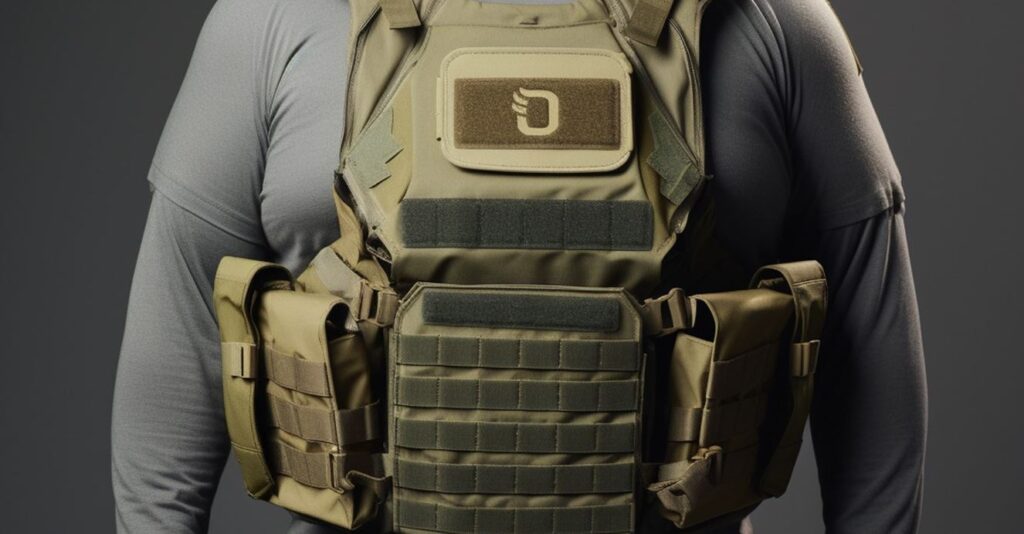People all across the world are more worried about their safety as a result of rising global instability. Body armor has become increasingly popular as a form of personal protection in light of growing concerns about personal safety. However, because there is such a wide variety of body armor on the market, consumers aren’t always clear on the distinctions between, say, bulletproof and stabproof vests. We’re here to help equip readers with the information they need to make educated decisions, this guide delves deep into the subject of body armor, examining the subtleties and applications of bulletproof and stabproof vests.
The main difference between bulletproof and stabproof vests is the type of danger they are meant to protect against. A bulletproof vest, often called a ballistic vest, is a type of protective clothing designed to withstand the force of bullets fired from a variety of firearms. Bulletproof vests are essential for protecting law enforcement officers, military personnel, security guards, and civilians from the fatal effects of gunfire in dangerous situations. However, a stabproof vest is designed to protect its wearer from stab and slash attacks with sharp-edged weapons like knives, needles, and other pointed objects.
Protection Levels Explained

To understand the differences in protection provided by various vests, it is necessary to get familiar with the specifics of body armor ratings and certifications. In the United States, the bar for testing and certifying body armor is set by the National Institute of Justice (NIJ). The National Institute of Justice (NIJ) assigns a level of protection (Level IIA, Level II, Level IIIA, Level III, and Level IV) to bulletproof vests based on their effectiveness against various handgun calibers. The NIJ also uses a different scoring method to indicate the effectiveness of stabproof vests. The armor’s ability to withstand a stabbing attack is measured on a scale from one to three levels.
Most bulletproof vests aren’t made to stop knife assaults, although there are some hybrid options. However, unlike bulletproof vests, stabproof vests do not provide adequate protection against rifle bullets. The level of danger one perceives in their immediate vicinity is a major factor in selecting one of these vests. A bulletproof vest may be a higher priority for those in law enforcement or who face threats involving firearms than a stabproof vest for those living in high-crime regions where knife violence is common.
Understanding Stabproof Vests:
Protect yourself from knives and other sharp implements with a stabproof vest, also known as a stab-resistant vest. The most susceptible parts of the body, including the chest, back, and sides, are protected by these vests in the event of a stabbing or slashing attack.
Poly-paraphenylene terephthalamide (PPTA), a high-performance synthetic fiber recognized for its strength and durability, is one of the fundamental materials used in stabproof vests. Ultra-high molecular weight polyethylene (UHMWPE) is another popular choice because of its great durability and low friction. These materials are layered and woven into a random fiber web to form a barrier against intrusion.
Although a stabproof vest will significantly reduce the risk of injury from most bladed weapons, it is important to remember that no vest is completely bulletproof. The fibers surrounding the point of impact shift when pierced by a sharp item, decreasing the speed at which the object can inflict serious harm.
Testing Stabproof Vests:
There are three distinct levels of protection offered by stab vests, as defined by NIJ standard 0115.00: Level 1, Level 2, and Level 3. The vest’s ability to endure force is represented by these grades. When shopping for a stabproof vest, it is crucial to carefully examine labels and necessary information and to select products from recognized and quality-driven producers.

Understanding Bulletproof Vests:
Bulletproof vests, often known as bullet-resistant vests, are clothing items that are intended to stop bullets from penetrating through them. Bulletproof armor, like stabproof vests, can be worn over or under regular clothes to protect vital areas like the chest and back from gunfire.
There are two main types of bulletproof vests: soft armor and hard armor. Police officers, jail guards, security guards, and some civilians also wear soft armor for protection against guns. Hard armor, also called hard plates, is designed to withstand the impact of larger bullets and explosive debris.
The Manufacturing Process of Bulletproof Vests:
High-tensile fibers or filaments are used to make bulletproof vests because they are much stronger than regular textile fibers. PPTA, Twaron, and Dyneema are some of the most popular materials for bulletproof vests.
Both PPTA and Twaron are examples of extremely strong and heat-resistant synthetic para-aramid fibers. Dyneema, on the other hand, is a UHMW polyethylene fiber that is gel-spun and is both soft and strong. Fabrics and sheets made from these fibers are the foundation of bulletproof clothing and gear.
The Functionality of Bulletproof Vests:
The energy of a bullet is dispersed by a bulletproof vest, considerably lessening its impact. When a bullet is fired at the vest, the dense fibers “catch” it, causing it to slow down and eventually halt. PPTA bulletproof vests may be adequate for stopping pistol rounds, but they may not be enough for rifle rounds, calling for the usage of even tougher materials like steel.
Testing Bulletproof Vests:
Bulletproof vests are put through a battery of tests, including those that measure their tensile strength and how well they weave, before they are released to the public. Levels I–IV of bulletproof vests are designated by the National Institute of Justice (NIJ) based on the types of gunfire they are designed to withstand.
Differentiating Between Stabproof and Bulletproof Vests:
The production and testing techniques for both stabproof and bulletproof vests are comparable, as are the types of high-performance fibers used in their construction. While bulletproof vests are optimized to withstand projectiles from firearms, stabproof vests are meant to withstand the threat posed by sharp objects like knives.
A vest designed to prevent stab wounds may not be effective against bullets, and vice versa. Therefore, people should take into account the various dangers they can face when making their choice of armor. A bulletproof vest is the best option if you’re worried about being shot. On the other hand, a stabproof vest should be a top priority if there is a larger chance of encountering sharp-edged weapons.
Pro Tips for Choosing and Using Body Armor:
Evaluate Your Needs
It’s important to take into account the actual risks you face when buying body armor. Invest in a hybrid vest that protects against bullets and stab wounds if you know you’ll be in an environment with knives and guns.
Understand Armor Ratings
Learn about the National Institute of Justice (NIJ) ratings for both ballistic and stab resistance. Armor with a higher protection rating can be more effective, but it often comes at the expense of weight and agility.
Invest in Quality
When shopping for body armor, look for brands that have a solid reputation for producing high-quality products that pass all necessary tests. Quality vests will keep you safe in dangerous situations because of the added protection and longevity they provide.
Proper Fit is Essential
Body armor that doesn’t fit properly might be dangerously uncomfortable. Make sure the vest is a close fit without limiting your range of motion or making you uncomfortable.
Regular Inspection and Maintenance
Check your body armor for damage and wear it regularly. To get the most out of your product, clean and maintain it according to the manufacturer’s instructions.
Adding Extra Layers of Defense
If you want extra defense against certain hazards, you might want to layer your body armor with extra plates or inserts. Think about how much you weigh and how easily you can move about.
Train with Your Gear
Practice wearing protective gear during drills and training. You can change your strategy and get used to the extra load using this.
Stay Informed
To make educated judgments regarding updating or replacing your protective gear, it is important to keep up with the latest developments in body armor technology and research.
Avoid Modification
Do not modify your body protection, as doing so could invalidate your warranties and certifications.

Frequently Asked Questions (FAQs):
Can you get knife protection with a bulletproof vest?
Although bulletproof vests do provide some protection from knife attacks, they were not made for that purpose. However, stabproof vests are designed to withstand attacks with knives and other pointed weapons.
Do bullets go right through a bulletproof vest?
Bullets will not be stopped by a stabproof vest. They aren’t equipped to deal with the force and penetration of bullets fired from firearms.
How often do I need to get new bodyguard gear?
Body armor should be replaced regularly, especially if it has been damaged, worn out, or used in hazardous environments. Despite manufacturers’ recommendations, regular inspection of the vest is necessary to ensure its effectiveness.
Do different types of guns pose a threat that body armor cannot stop?
There are different types of ballistic protection available for body armor, and not all vests are effective against powerful rifles. It is crucial to fit your armor to the potential dangers you will face.
Can total protection be attained while wearing body armor?
Although body armor can lessen the likelihood of harm, it cannot ensure complete immunity. The level of danger, the nature of the weapon, and the direction of the attack all play a role in how effective the armor will be.
Do any laws prohibit citizens from possessing body armor?
Different jurisdictions have different rules concerning the possession and use of body armor. If you live in a place where the use of body armor is prohibited, you should learn about those laws before making a purchase.
Can I go out in public while armored up?
The use of body armor in public is generally sanctioned by law. However, there may be limits in locations like schools and government buildings. Always check the legislation in your area before donning body armor.
May I travel with body armor?
It’s important to research the local legislation concerning body armor before any international travel. Possession of body armor may be subject to regulation or licensing in several countries.
Can I wear both a bulletproof and a stabbing-proof vest for maximum safety?
While certain hybrid vests can protect from both stab and ballistic threats, wearing multiple layers of armor at once is not recommended because it limits mobility and reduces protection.
Will wearing body armor protect me from harm?
If you’re attacked, wearing body armor increases your odds of survival greatly. Protect yourself, be aware of your surroundings, and take protective action if necessary.
Overall
When it comes to safeguarding one’s physical integrity, body armor is a crucial tool. Different kinds of protective clothing are designed to deal with different dangers, such as bulletproof and stabproof vests. While there is no such thing as a completely bulletproof or stabproof vest, they do greatly lessen the likelihood that you may be seriously hurt or killed in dangerous situations. Knowing the materials, testing standards, and intended uses of each type of body armor vest is crucial when shopping for protective gear. Enhancing safety and security and offering peace of mind in unpredictable times can be achieved by making an educated decision and selecting suitable armor depending on individual needs. Keep in mind that you should never risk your safety for anything, and purchasing quality body armor could end up saving your life.




